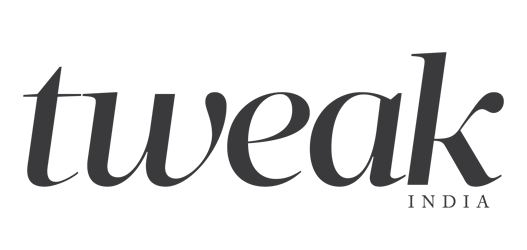
Dear moviemakers, give us more than all-female reboots
“We don’t want to be in a ghetto where we’re making only 10 films about women and they’re the only ones that represent us”
I was obsessed with Supergirl as a little girl. Not the Melissa Benoist-led CW series, but the sister of Christopher Reeves’ Superman. The latter ended up with four movies. Supergirl apparently flew back to Krypton after one film. Decades later, I nerded out with the news that Captain Marvel, Marvel Studios’ first female-led superhero film was in production. The idea that the ladies of Big Little Lies united against a vicious abuser made me shiver with pride—even if it did culminate in manslaughter.
As a little girl who cut off her Rapunzel Barbie’s hair so it didn’t get in her way while she went about her daily life, seeing woman power on screen always got me excited. Perhaps it made it easier to imagine myself as the hero.
Turns out a lot of little girls and grown women think this way. “I dread reading scripts that have no women involved in their creation because inevitably I get to that part where the girl turns to the guy, and she says, “What do we do now?!” Do you know any woman in any crisis situation who has absolutely no idea what to do?” Reese Witherspoon could add ‘fortune teller’ to her many roles, because this rousing speech happened at a 2015 awards show—well before all-female reboots and women-centric films became the flavour of the day.
Though the Mary Tyler Moore Show premiered in 1977, Buffy has been a feminist icon since the ‘90s and Aparna Sen, Mira Nair and Deepa Mehta have long since proven a lady’s place behind the camera, seeing films and shows written, directed and starring women still make us pump our fists in enthusiasm.
All-female reboots like Ocean’s Eight, and Ghostbusters are seen as empowering feminist updates. That Priyanka Chopra, Deepika Padukone and Anushka Sharma own production companies are #bossmoves because we’re used to studio heads being male. But is the Utopian girl power wave we’re seeing on screen representing real life accurately?
The problem with all-female reboots…
View this post on InstagramDoesn't take a doctor to know Kevin's got a heart of gold. #Ghostbusters
A post shared by ???????????? (@ghostbusters) on
Between Hollywood, the most profitable film industry in the world, and the Indian film industry that’s the most prolific, there are definitely more jobs available for women to glow on screen. Streaming platforms are another avenue for inclusion. But while all-female reboots, and women-centric projects are made to keep up with the times, satisfy social media activists or fix the decades of abuse and inequality that #metoo revealed, how women are represented is key. Simply casting women is a form of tokenism. As 2019’s The Hustle proved, having women step into roles previously held by men is just a small step—with critics agreeing there was nothing to the film beyond the ‘feminine twist’.
Screenwriter, columnist and founder of Agents of Ishq, Paromita Vohra says, “The most basic necessity is representation—more female leads, characters, directors, crew members. There is a shift occurring, but I would agree to some level it is tokenistic. In general, across all films, are you seeing a continuous representation of female interiority?”
It becomes problematic, like in Ghostbusters, when the story isn’t reimagined from the female perspective. Here, the new cast was retrofitted into an old frame—exposing a flaw in the system. As keen as I was to enjoy Ghostbusters, the funniest part was Chris Hemsworth, tongue-firmly-in cheek, turning the sexy secretary trope on its head. The ladies struggled to prove their legitimacy to the disbelieving public—exactly like the OG cast. Captain Marvel, on the other hand, came across as Marvel’s knee-jerk reaction to the need for a female superhero (I guess they forgot about Black Widow. Again)
Back home, the existence of films where the female is not just an accessory to the male lead or a plot point, has been a leap of sorts—but we’re still walking a slippery tightrope—as for every Raazi and Lipstick Under my Burkha, there’s a Great Grand Masti, and inexplicably, the continued existence of ‘item’ numbers.
Back story
Kangana Ranaut starred in, and co-directed Manikarnika: The Queen of Jhansi that received praise for its strong female voice. Shelly Chopra Dhar directed Ek Ladki Ko Dekha to Aisa Laga— a thoughtful take on a young lesbian, coming of age. Raazi was a poignant personal film that spoke of an Indian spy’s growing love for her Pakistani husband conflicting with her loyalty to her nation. Pink was a gripping courtroom drama where a do-gooder lawyer brought justice to wronged women.
All well-made films concerning emotional subjects. The only difference was that the first three delved deeply into the female perspective, while Pink ended up a vehicle for the men uplifting the women in the story, exposing what limited BTS female inclusion can lead to.
Filmmaker Alankrita Shrivastava offers a point of view, “I’m happy Pink was made because it’s about a nuanced issue but why does a man have to save the situation in the film? It was told from the man’s point of view because there was no female writer.” The overused damsel in distress trope isn’t helping anyone. Especially damsels.
And as the ladies of Wonder Woman (directed by Patty Jenkins), Glow (created by Liz Flahive and Carly Mensch), Fleabag (created and written by Phoebe Waller-Bridge), and Made in Heaven (created by Zoya Akhtar and Reema Kagti) amply prove, woman can tell their own stories, be their own heroes, and most definitely play them on-screen. Just like in the case of Elizabeth Banks, who directed the Charlie’s Angels reboot and responded to ‘backlash’ like the boss she is.
Bollywood is slowly progressing too, aided by a few successful actors taking the production reins themselves. Says Vohra, “When I was 20, I couldn’t even imagine working in Bollywood. It was a hardcore male space—full of camps and clubs. Now, with the overlap between film, advertising, streaming platforms etc, and women being able to command higher salaries, there has been a shift in the structure. Women filmmakers still tend to be ones that already have connections within the industry, but it’s changing.”
Shrivastava confirms, citing examples from her career where production crews wouldn’t take her demands seriously because she was a woman. “Women don’t have speaking parts or leading parts because they’re not involved in making the films. We need to get to a 50/50 representation both on and off screen, even if women are making films about men.”
Vohra says it best, “We don’t want to be in a ghetto where we’re making only 10 films about women and those are the only ones representing us. We need to see a continuous representation of female interiority across films. It’s also crucial men make films about women, women make films about men and everybody makes films about everybody.”
The premise is simple, since we populate half the planet, give birth to everyone on it, work as hard and have as many stories to tell— we should be able to do what we want, on and off the screen. We can handle the criticism, and the accolades. That’s what women want, and we’ve been saying it for decades.

